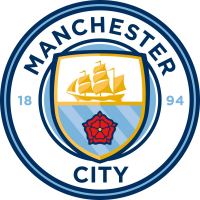In his excellent book, Mastering the Premier League: The Tactical Concepts behind Pep Guardiola's Manchester City , Lee Scott dissects what makes City such a modern success story, and in this extract he looks forensically at Kevin De Bruyne, and what makes him so difficult for defenders to stop.
IN THE HALF-SPACE

When we consider the types of movement that we see from David Silva as the left-sided central midfielder to occupy certain spaces, the picture for Kevin De Bruyne, when he is fit, is slightly different. While Silva prefers the half-spaces and the wide areas, we see De Bruyne occupy space across the central areas, the right-sided half-space and the right wing. Pep Guardiola expects his players to consider certain markers when taking up positions in the attacking phase. The ball, the other City players and then the opponents are taken into account as the likes of De Bruyne drift in and out of pockets of space in and around the final third.
We see this in Image 1 (above) as the ball is with the right-sided central defender. On the right-hand side the wide forward is against the touchline. De Bruyne, therefore, will look to retain a position either centrally or in the half-space. The aim is to force the opposition player that is between De Bruyne and the wide forward to be caught in no-man’s land. If the defender moves wide then De Bruyne has increased space to play in. If he moves narrow to cover De Bruyne then the pass into the wide area is free. A lot of the movement and positioning of the City players in the final third are designed to force the opposition to make choices in this manner.
THE DRIVEN PASS

The problem that opposition teams have when it comes to Kevin De Bruyne is that he can kill you in a variety of ways. If you press against him then he can beat a man 1v1, or combine quickly with team-mates to play through the pressure. If you do not press and give him space then he has perhaps the most impressive range of passing in all of football. If you do not press to engage the ball then there is a strong chance that the Belgian will simply identify the space in the defensive structure and exploit it.
We see an example of this in Image 2 (above). As De Bruyne takes possession of the ball in the right half-space the opposition sit off and look to deny the Belgian the space that he would need in order to play the ball through into the penalty area. Instead, De Bruyne is able to take the time to identify the space, which is on the left-hand side, and then to access this space with a driven pass across the face of the opposition defensive line. De Bruyne specialises in this driven pass, whether across the field or through passing lanes into advanced areas. One of the overriding reasons for him having an exceptional passing range is the technique with which he strikes the ball. This is clearly seen when switching the play in this manner as not only is the length of the pass is perfect but the weight and the spin are as well.
THE PINPOINT CROSS

This passing range can also be applied when Kevin De Bruyne takes possession of the ball in the wide areas. He is superb when playing driven or whipped passes into the penalty area. The idea behind these passes is the same that we see from him in more congested central areas: to play the ball into spaces, in front of goal this time, which will allow his team-mates to move forward onto the ball for goal scoring chances.
We see this in action in Image 3 (above) when the ball is played out to De Bruyne in the wide space. As he takes possession there does not seem to be much in the way of direct danger for the opposition as the striker and left-sided forward are relatively deep. Such is the quality of passes that De Bruyne is capable of, he simply drives the ball with curve and spin across the space behind the defensive line. As soon as De Bruyne had taken possession, the left forward, Leroy Sane, had begun his run and he breaks the defensive line in order to collect the ball in the box for an easy goalscoring opportunity.
SHOOTING FROM DISTANCE

We have already put a large emphasis on the way that Kevin De Bruyne strikes the ball and how this benefits City. This also stretches to encompass the danger that the midfielder carries when striking at goal from distance, especially around the edges of the penalty area.
In order for De Bruyne to be able to affect the game from these areas, however, City need the tactical structure around him so that he can collect possession in pockets of space. In Image 4 (above) we see an example of this in action. First, look at the position that De Bruyne is in when he collects possession, in the half-space, then look at the wide forward, hard on the outside. Finally, look at the defender, caught between the two! Once again the defensive player is not able to move in to cover the passing lane to De Bruyne because of the threat out wide. As the ball progressed through to him through John Stones and then Kyle Walker, the Belgian has the ball in space. Now, here is the true danger that De Bruyne possesses in and around the penalty area. He can combine with others or slip through balls behind the defensive line. He also is extremely accurate when shooting from these areas. In this example when he took possession of the ball he was able to strike across goal as he was in space.
OVERLOAD

The final example that we will show is of Kevin De Bruyne taking possession of the ball in and around the final third before playing a quick combination to release a team-mate behind the opposition defensive line.
The concept of overload is one which is central to the game model implemented by Pep Guardiola at Manchester City. Once more that concept is in play in this example. Bernardo Silva, on the right wing, and Kyle Walker, in a deeper area in the wide space, are going to combine with De Bruyne to overload the two defenders on that side of the pitch. As the ball is moved from Bernardo inside to De Bruyne the two defensive players are static, believing that the threat is in front of them.
It is at this point that Walker makes a delayed run between the two defensive players and De Bruyne slips a through ball past them in order to release Walker behind the defensive line. This quick combination takes just seconds but is extremely effective.

 Kevin De Bruyne
Kevin De Bruyne  Man City
Man City  Belgium
Belgium 






